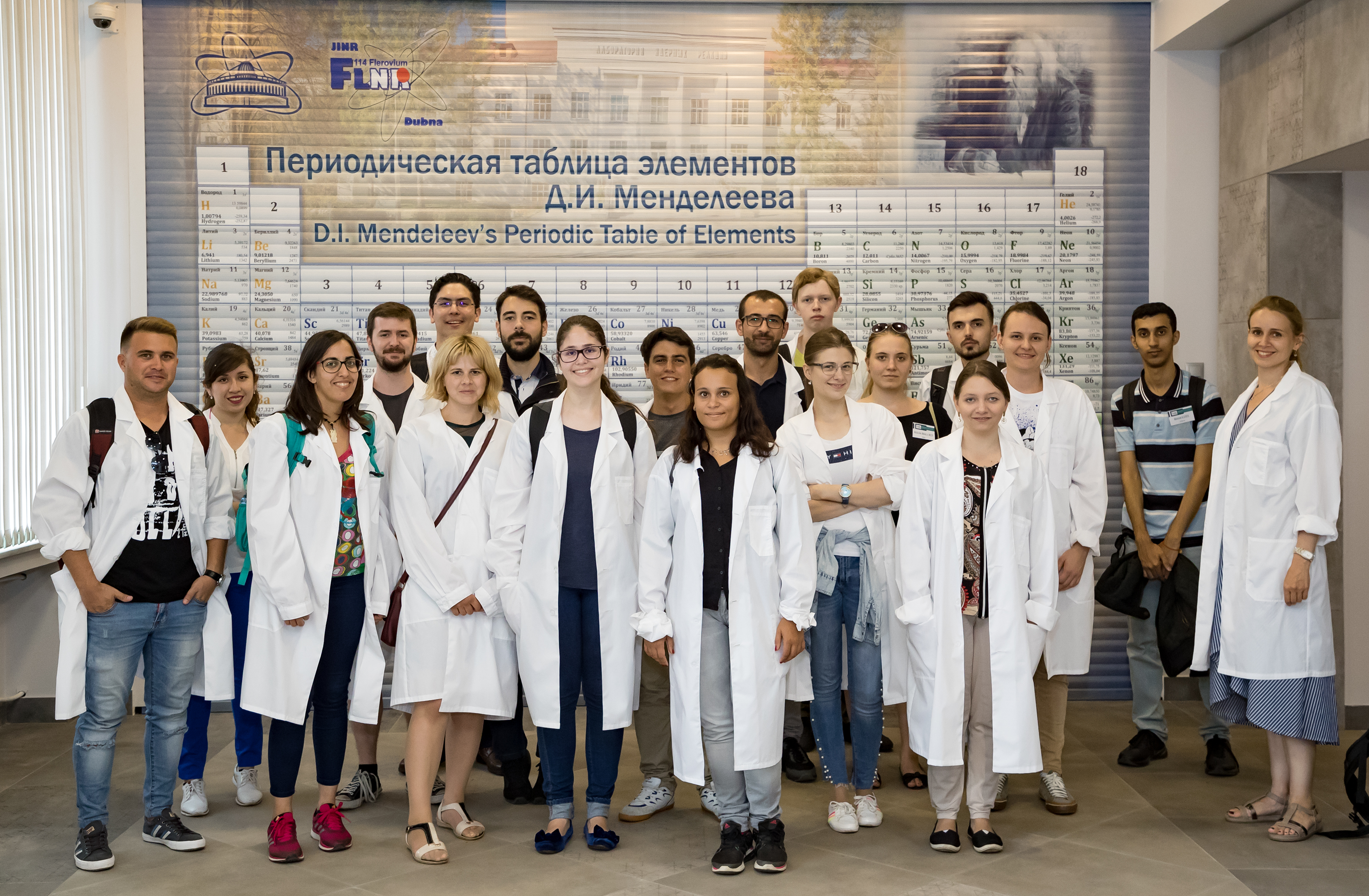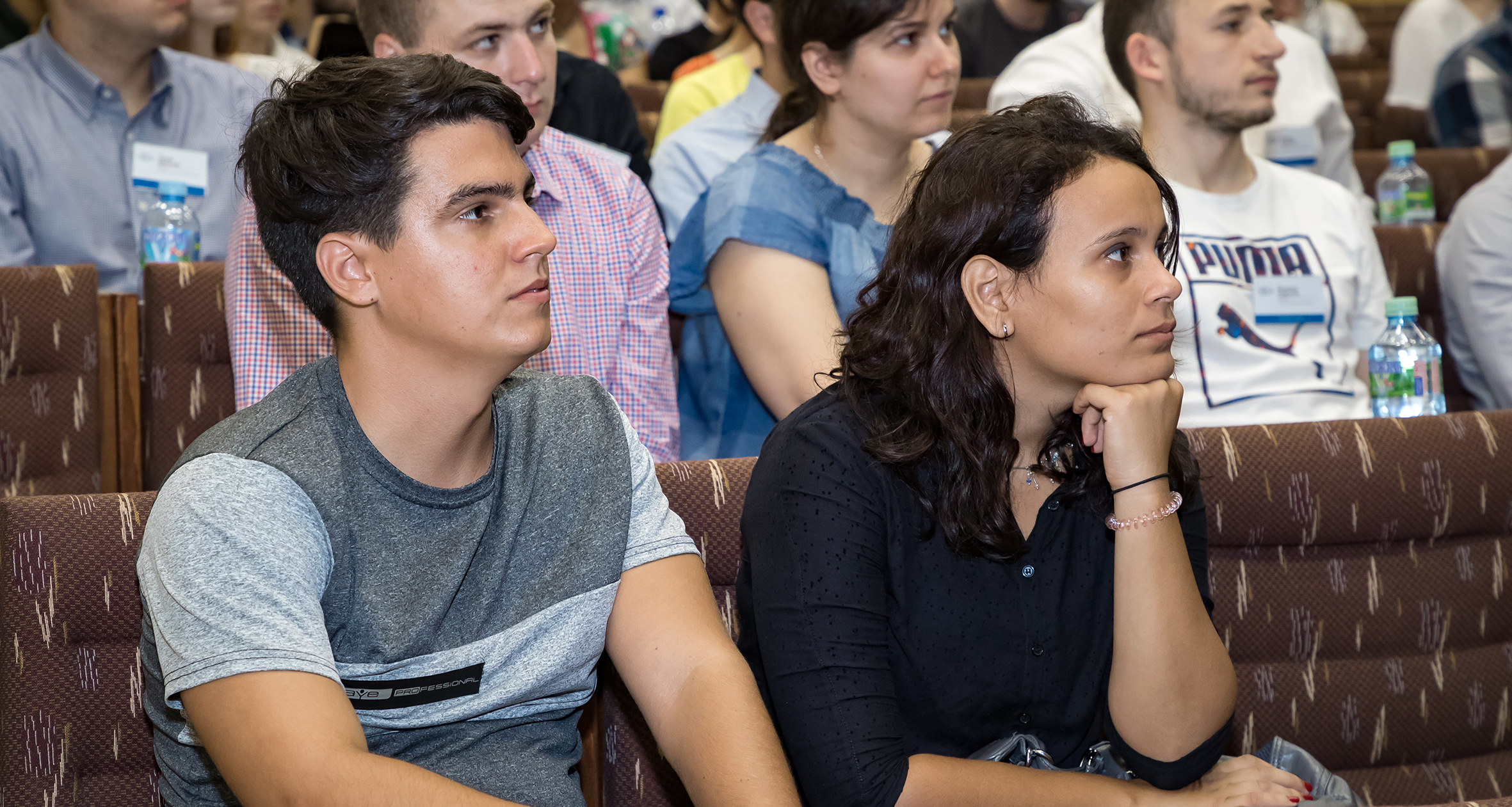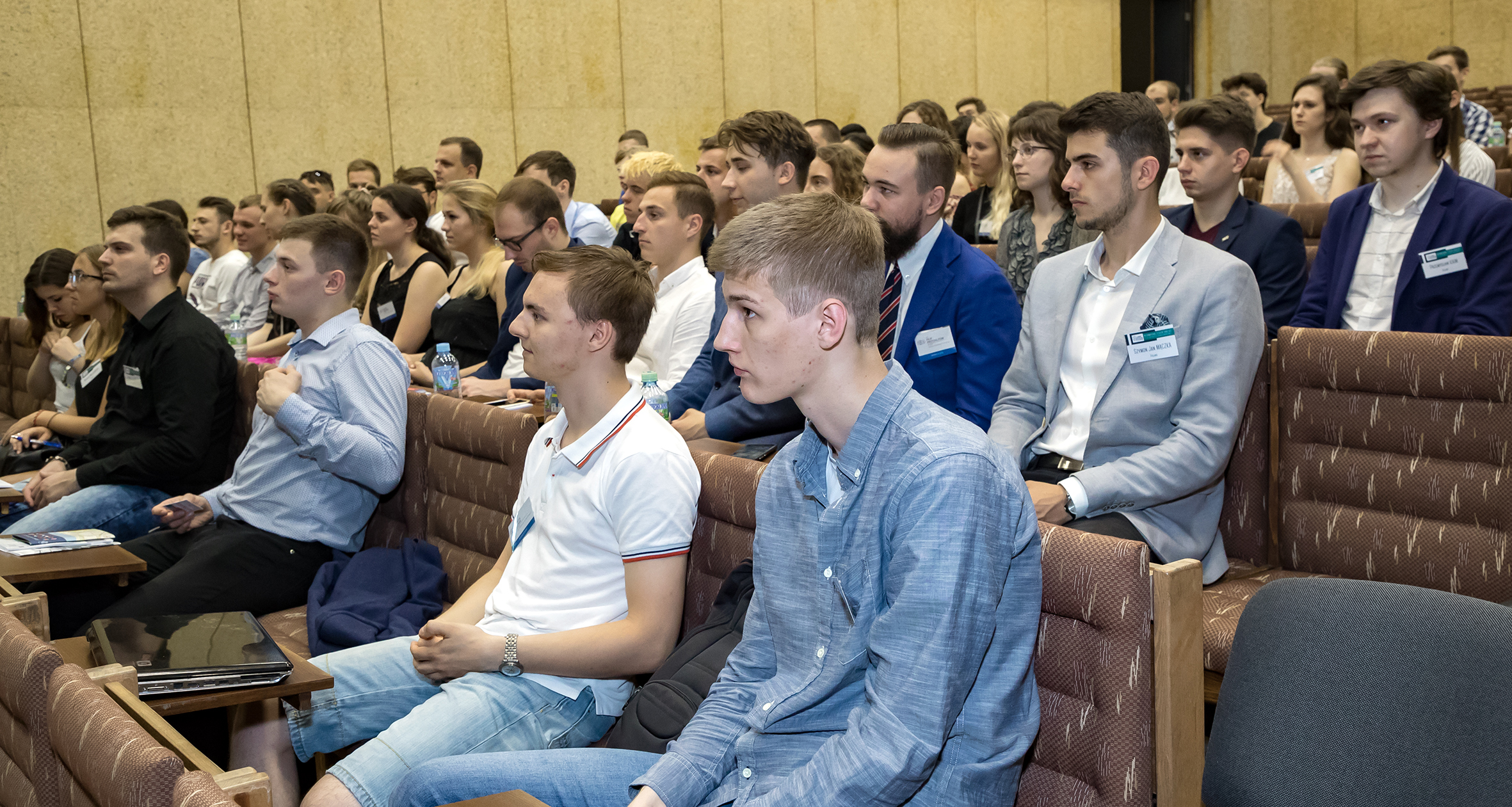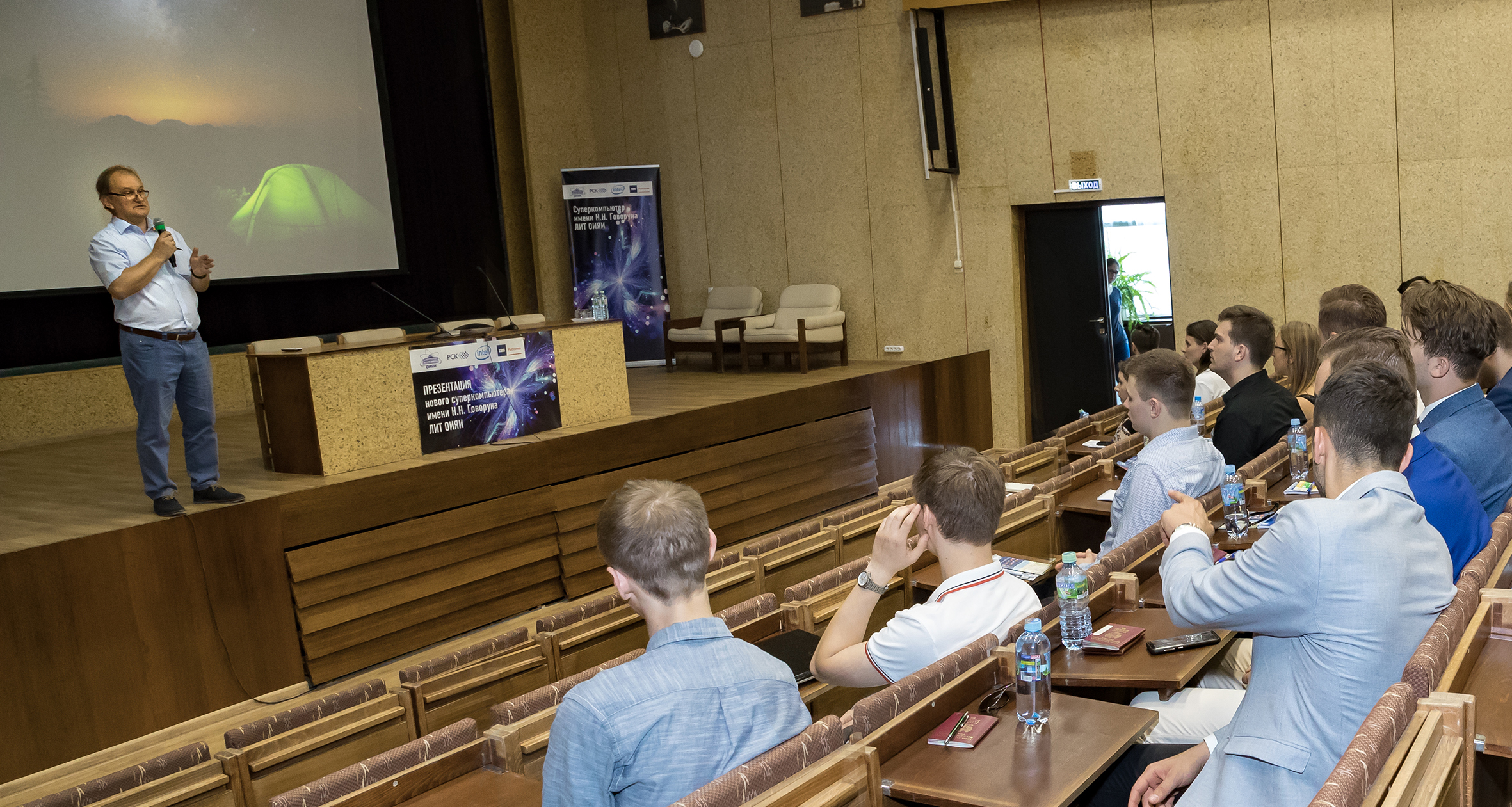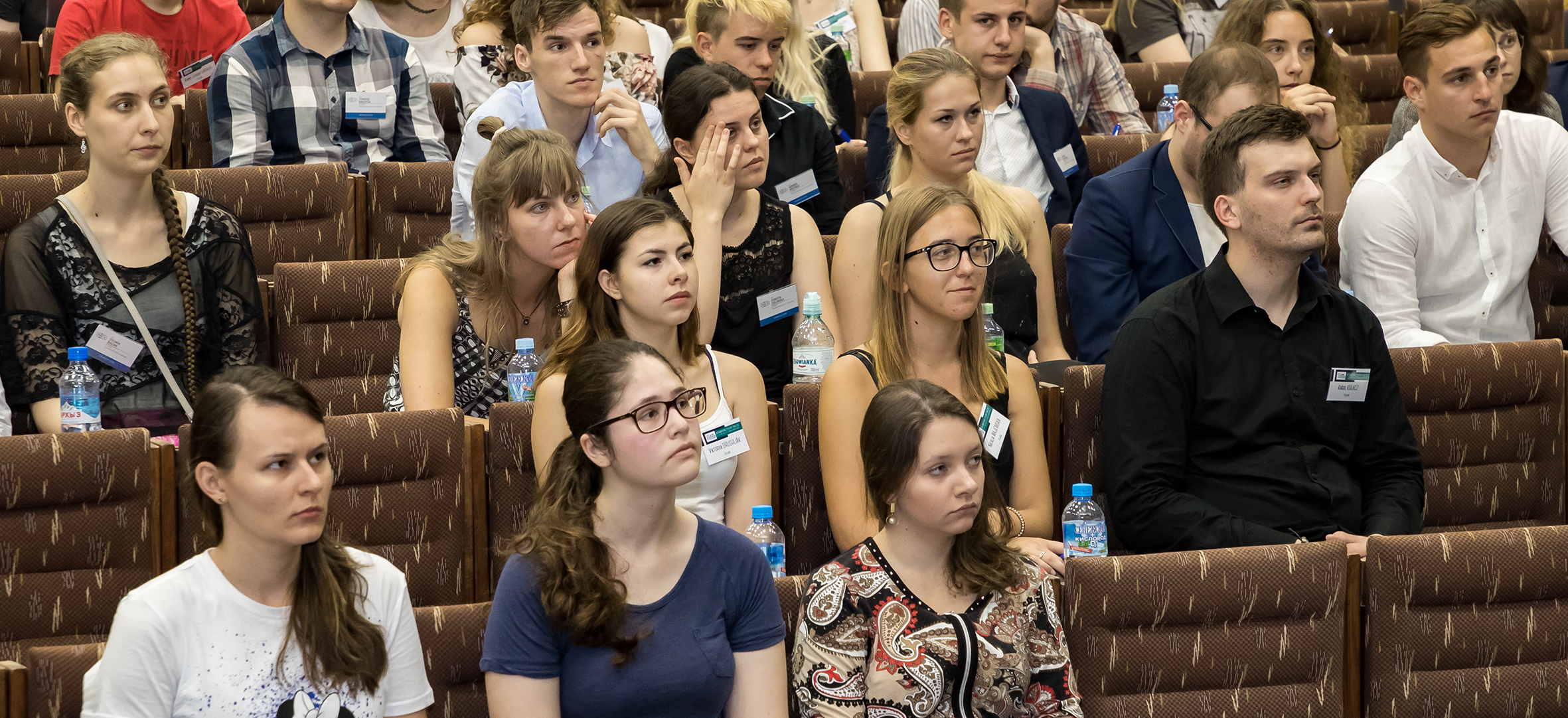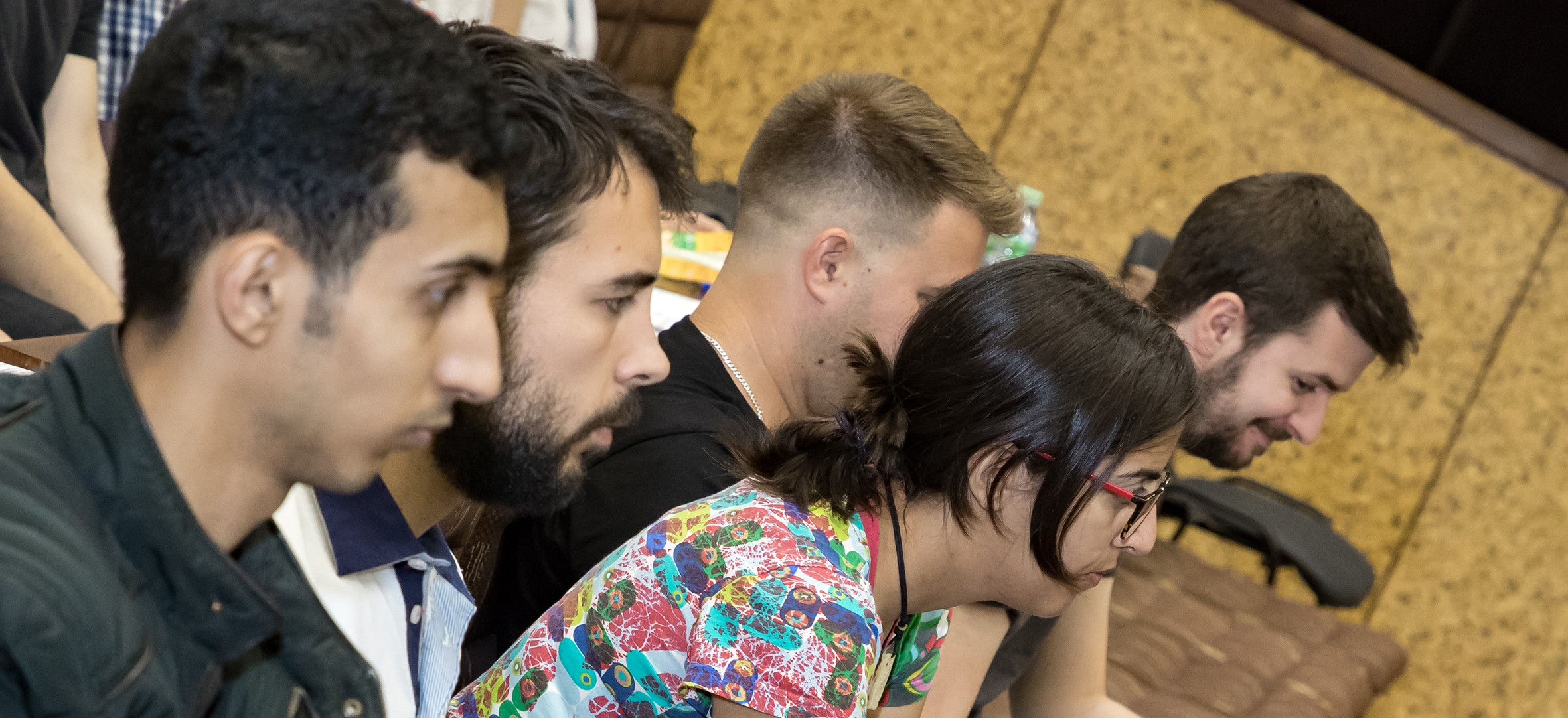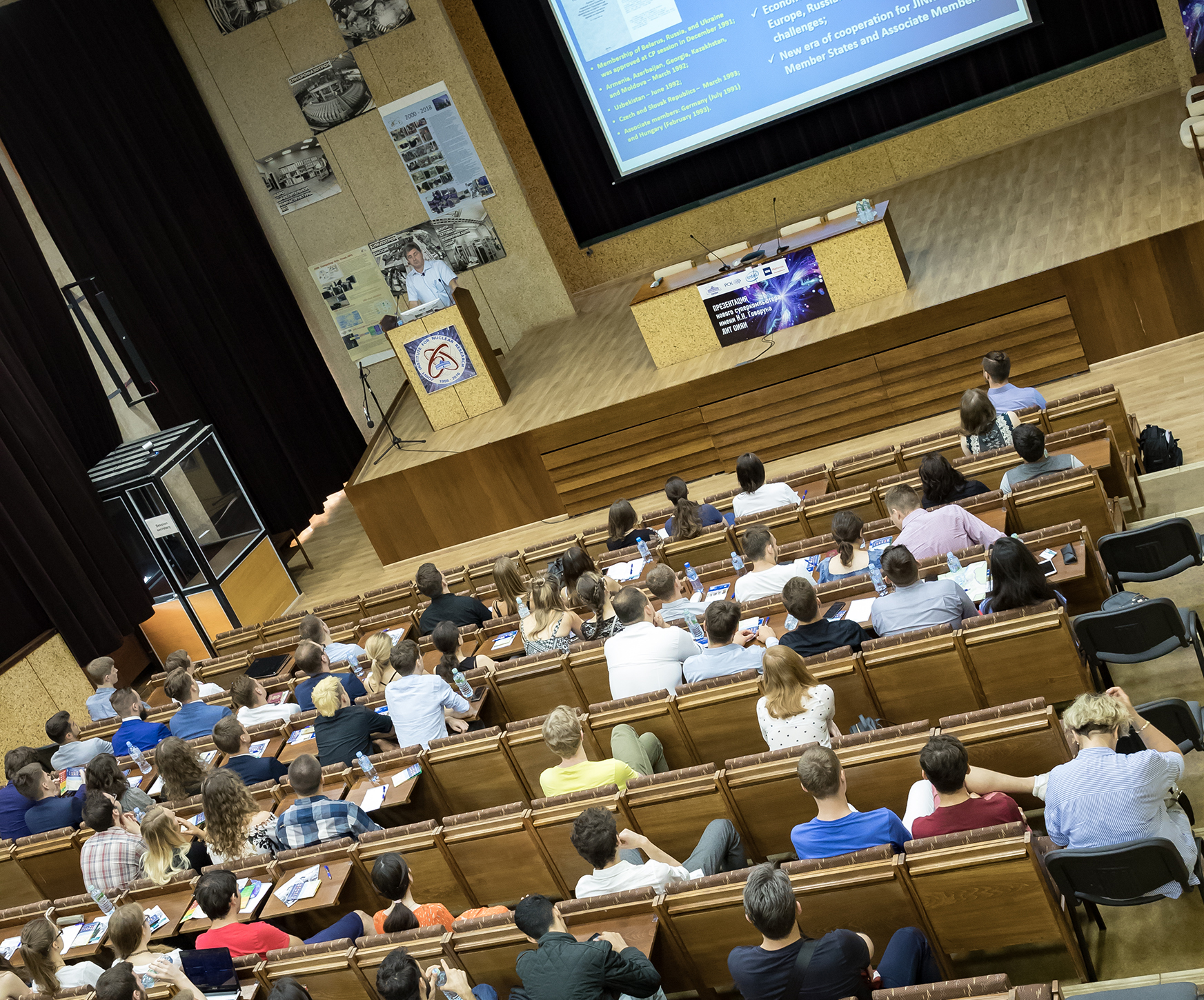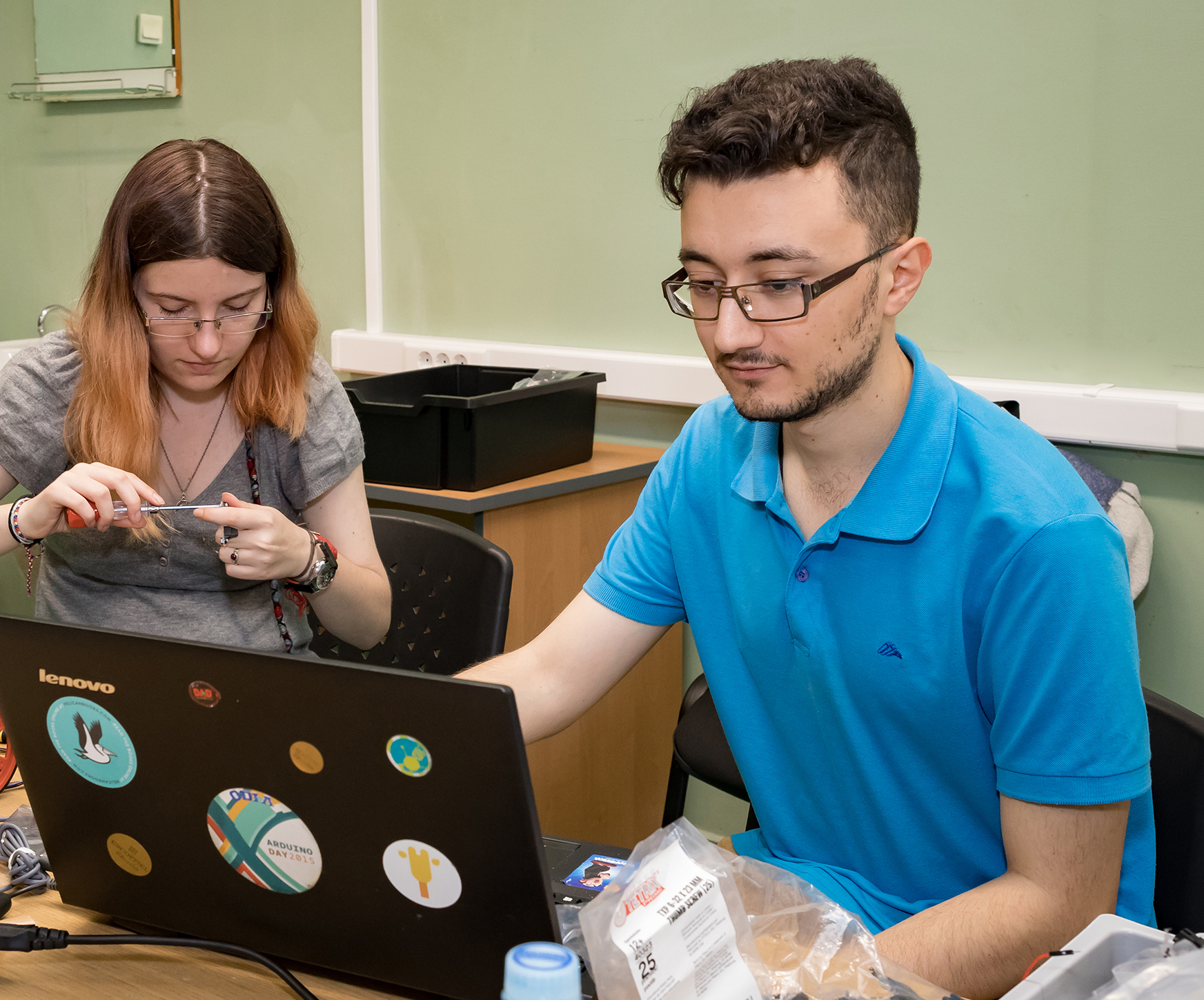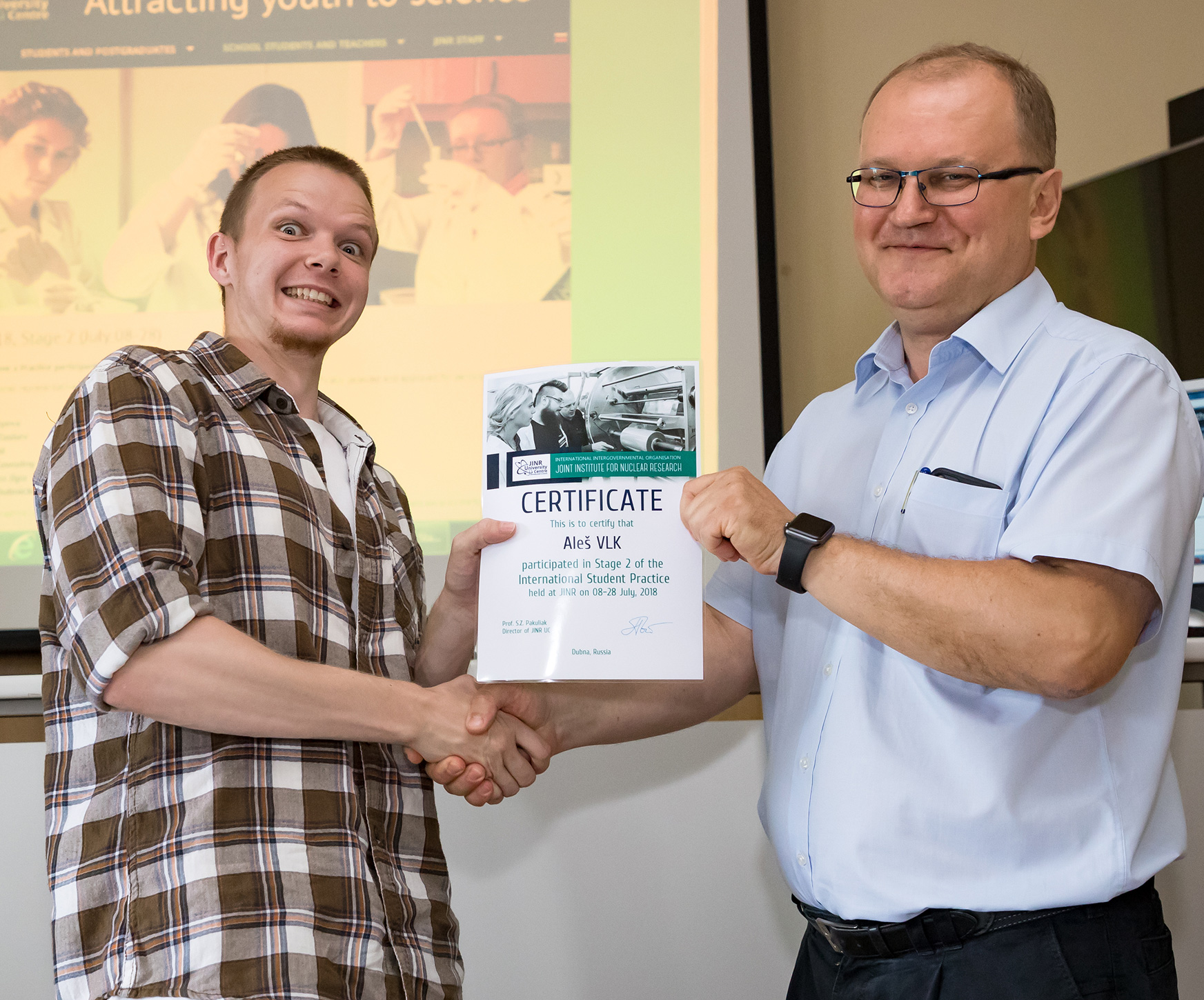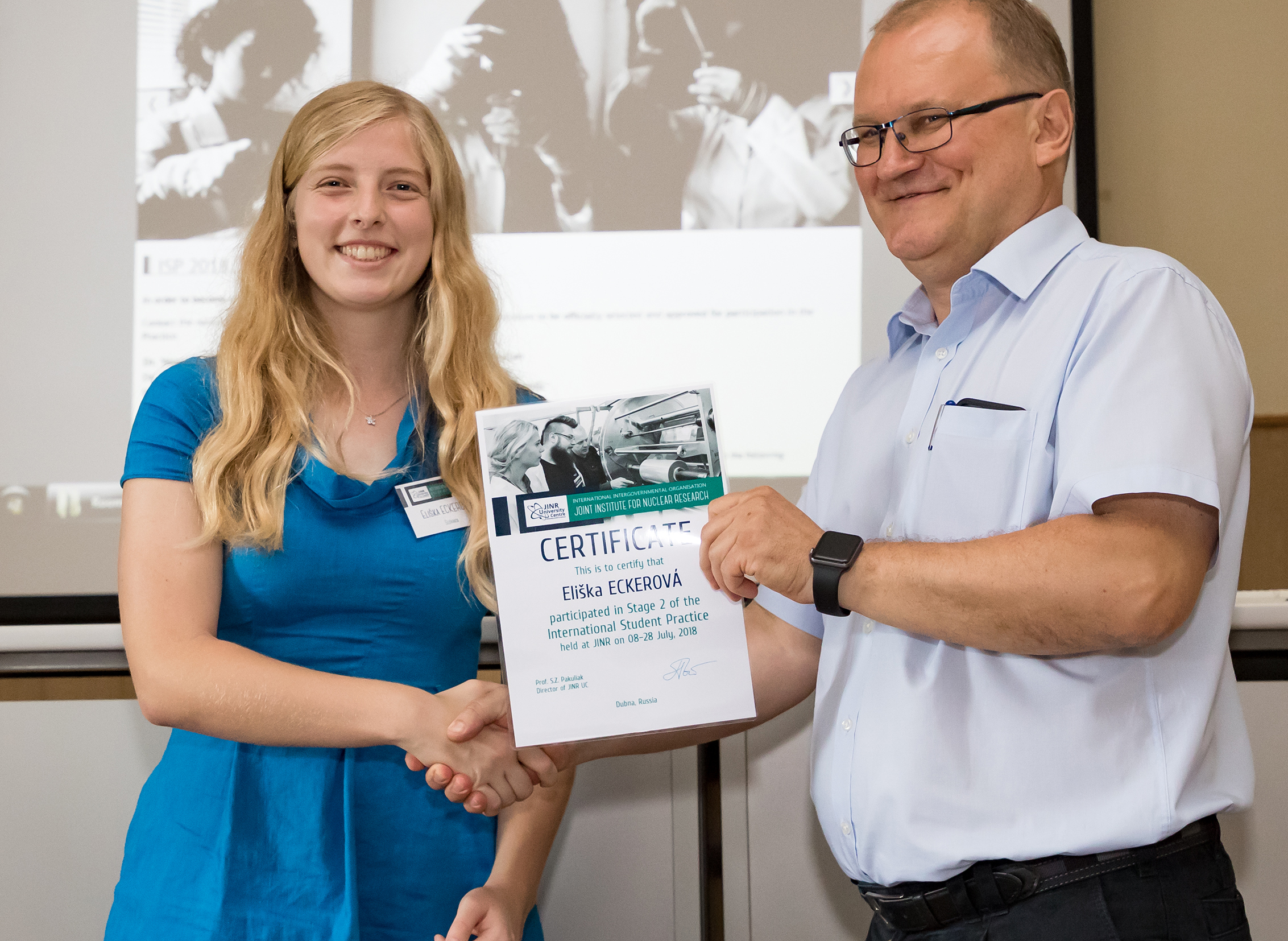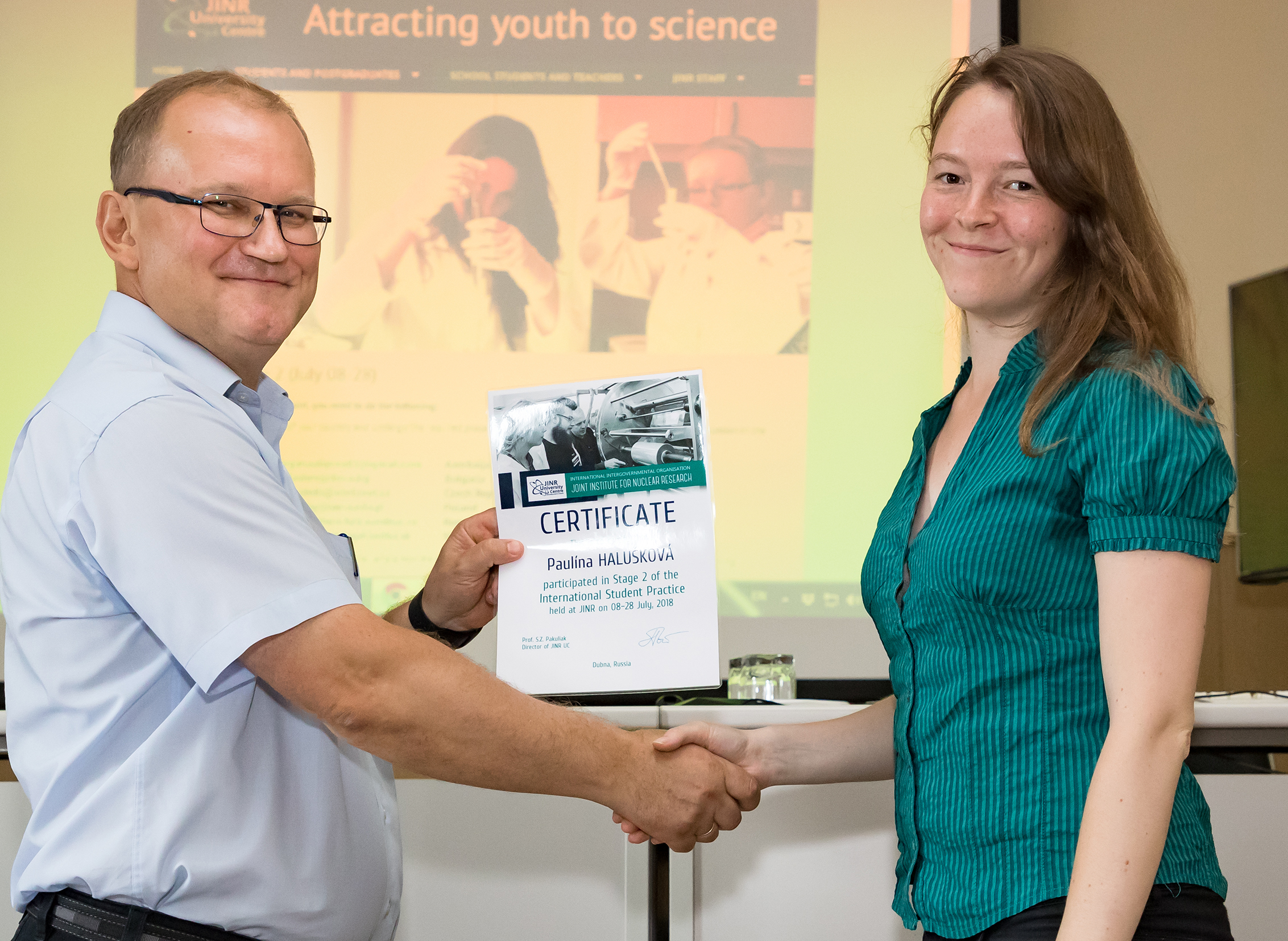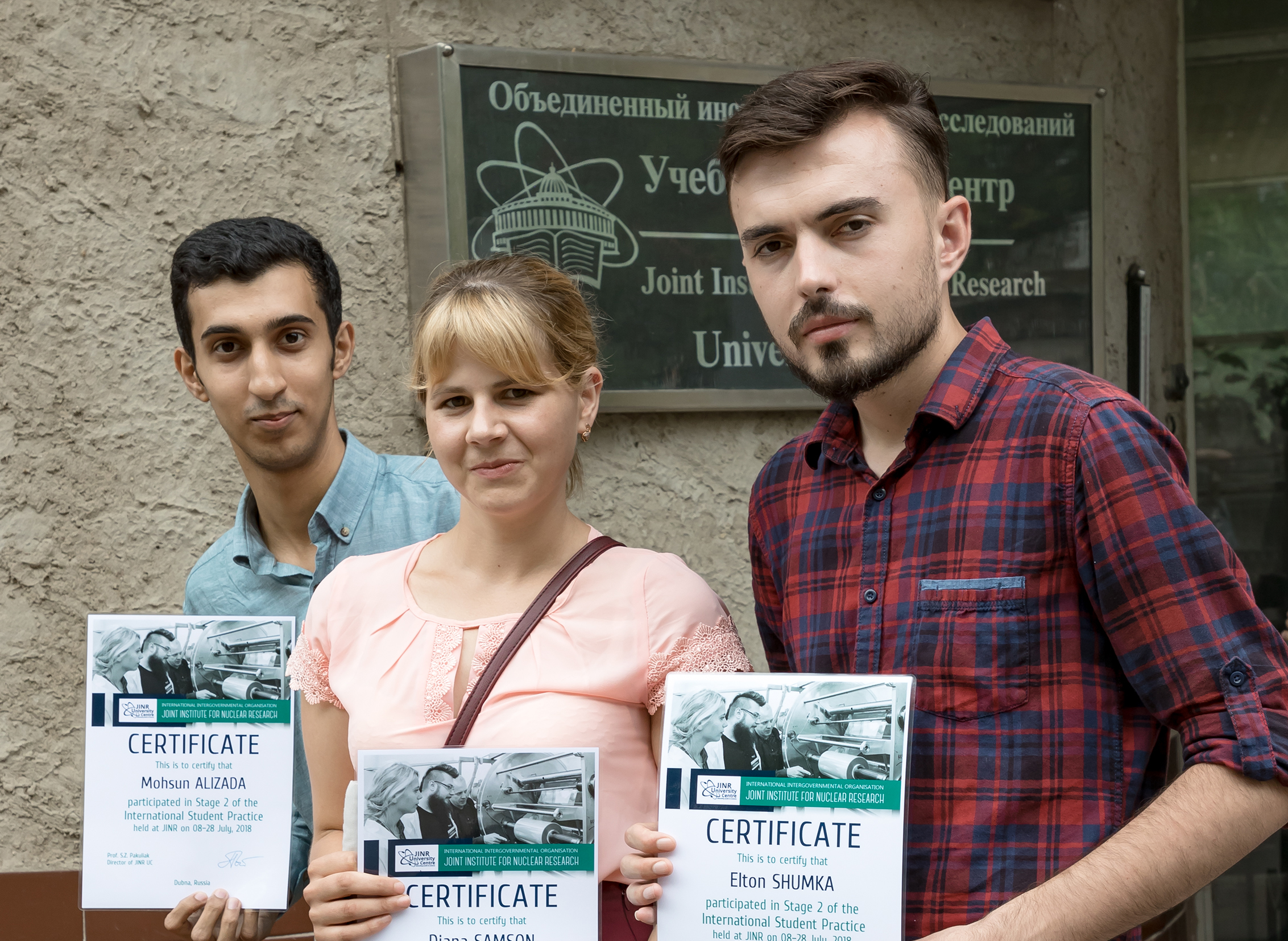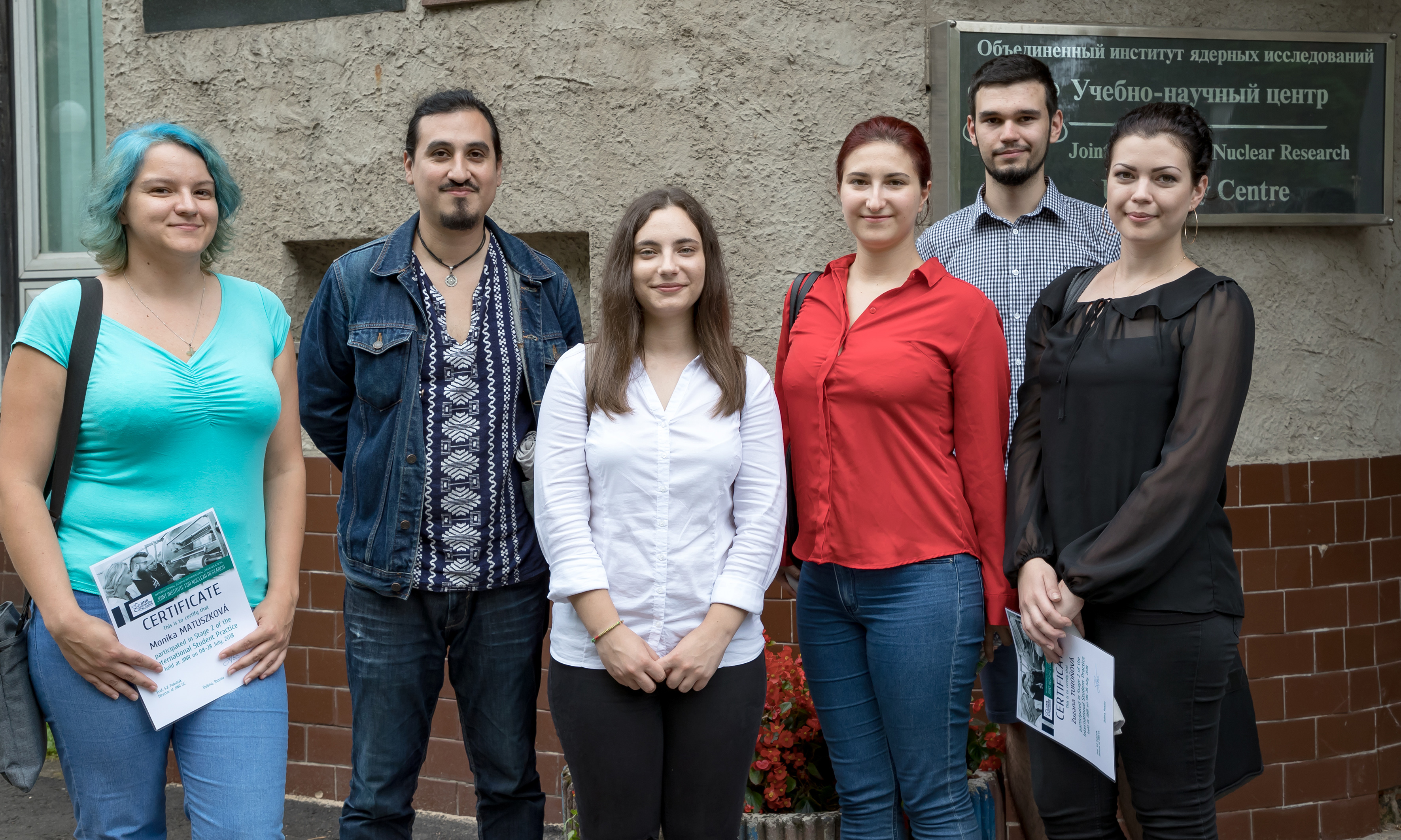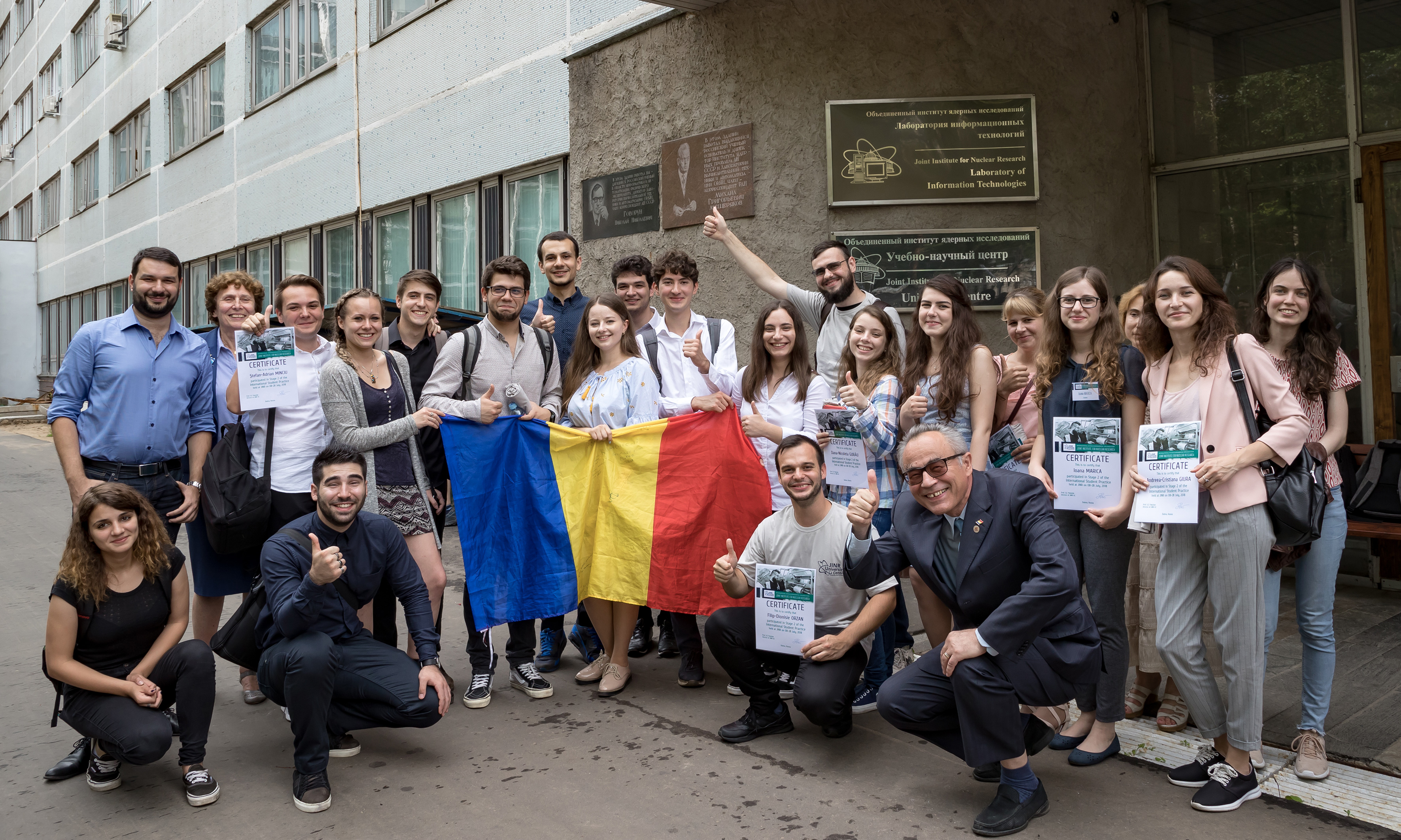Practice. Second Stage. Part I
Education, 02 August 2018
This year the second stage of the International Student Practice held by the JINR University Centre with the support of all the JINR laboratories was devided into two parts.
The first group of students was comprised of 20 participants from Romania, 15 students from the Czech Republic, 9 students came from Slovakia, 3 from Azerbaijan and 3 from Bulgaria. The second group represented by 25 Polish students came to Dubna one week later, and the practice still continues for them. The total number of participants of the second stage of the Practice was 75 students. The students got acquainted with research carried out in all JINR laboratories and prepared research projects under supervision of specialists of the JINR laboratories in three weeks. On 27 July, defense of projects made by participants of the part I of the 2nd stage was held.
Supervisors from JINR laboratories said about students they worked with during three weeks.
R. Wolski (FLNR): The following approach is known: the sub-barrier fusion of heavy ions depends on the energy balance. The task of Adam Broniš was to revise a very large amount of data that is available on the website of our programme, which is, by the way, widely used, and to check this dependency. No special skills are needed for it, but the creative nature of work was that he suggested reasons why very few data do not obey this rule. It was easy to communicate with him: I offered this approach in taxonomy, and the student was quite mature and did almost everything by himself. By the way, I gave him other material, this one he chose by himself and worked at it. He also made a presentation by himself; I would have made it in other way. It is possible that we will prepare a joint article for the journal. Adam is a post-graduate student of the Slovak University, he is a future scientist, and I suppose he will work in our group. He has read all the articles on the issue to be prepared and seemed to me very capable.
Mihai L. Craus (FLNP): Viktorie Víchová is a well-trained Czech student. In the frames of the project, she got acquainted with methods used for obtaining data on the structure of substances, in particular, manganites. I showed her how composition of manganites is determined, we weighed necessary components on the scales, studied the magnetic and electrical properties. These materials are highly interesting, they can be used in computers or, for example, they can be used as sensors. The range of their application is wide. We will use the obtained results in the joint scientific paper. I explained to her how a brief scientific report should be written. It will be useful for her in the future if she plans to conduct scientific research. I always try to pass everything I know to my students. I would be happy to work further with her or other students of the same level.
D. Dabrowski (VBLHEP): The aim of the students’ project was to create a robot that would move around the NICA collider in the moments when the radiation level would be too high for humans and monitor its state: whether there is any gas leakage or any mechanical damage. The students constructed the robot, worked out the control algorithm for it as well as algorithms that allow the robot to work autonomously, without human control. A student from Azerbaijan and a student from Romania participated in this project. They were well-trained, but we should give them additional information on the project. We were very pleased with them.
S. Adam (LIT): We have always been monitoring success of Romanian students at these practices, they are always distinguished by a high level of training, and it was true for Romanian participants of this year as well. Today, I heard their reports, they understood what they were talking about, and it is very significant. It means that they did not just walked around and wasted time here for three weeks; they broadened their knowledge.
R. Dvornicky (DLNP): Three students from Slovakia, from the Bratislava University, participated in our project. The levels of their training were different: one student had a Master’s degree and two of them had bachelor’s degrees. Most importantly, they learned the software by themselves and then the experiment itself began to be moved forward. The girls were engaged in the Monte Carlo modelling while Peter made charge calibration necessary for them. Of course, some kind of a miracle cannot be expected in three weeks, but I really liked how they worked. Maybe, they will get their postgraduate education here. They appreciated our work, I was calm working with them.
Teymur Orujov (the Azerbaijan Institute of Physics) performed the project in the UC engineering group: I have already finished my postgraduate education, however, I have not defended my dissertation yet. At the Practice, we were engaged in basics of electronics, constructed various schemes; it was helpful to learn about oscillographs, generators that will be useful in our future work. All in all, I have good impressions of JINR, many interesting projects are conducted here. If there is a possibility, I would like to carry out scientific research here.
Carina Udrea (the University of Bucharest, Romania) participated in the project on neutron activation analysis in FLNP: I never thought I could learn so much in three weeks. In first week, it seemed that I would not be able to cover all this. At school you are made to study while here I gained knowledge by myself, my knowledge was growing exponentially. It was amazing. Everything specialists do here impresses. Thank you all, I hope that in two years I will return here to carry out my master’s thesis or candidate’s dissertation. It is a great opportunity, I will definitely return.
Alizada Mohsun (the Baku State University, Azerbaijan) participated in the FLNR project within a group: I got the Bachelor degree at the Faculty of Physics. I was offered here to devote my master’s thesis to fission of hypernuclei, and we discussed this project during these three weeks. I hope I will have made the decision until September-October. It was a pleasure to work in FLNR; we did a lot. We measured the width of the film by ourselves; we worked at the facility by ourselves; we worked out the programme by ourselves as well. It was very interesting. Many thanks to Eduard Mikhailovich Kozulin for everything!
Diana Samson (the Alexandru Ioan Cuza University, Jassy, Romania) also participated in this project: I am very happy that I have participated in the Practice, many thanks to our supervisor for the opportunity to study. I will be happy if I am invited to participate once again.
Mariia Mohylna (the Pavol Jozef Šafárik University in Košice, Slovakia) had the Practice in BLTP: It was a brand new information for me as far as I am engaged in other fields of theoretical physics. The topic of the Practice covers the fields I have knowledge gaps in and I would like to fill them in. It was a great pleasure for me. Of course, three weeks are not sufficient to learn something in details, but some basic knowledge were acquired. The atmosphere, people we worked with, organization of the Practice – all brough great pleasure.
The Practice was concluded, participants went away from Dubna with new knowledge and contacts, and, of course, certificates and memorable T-shirts.
Olga Tarantina, JINR Weekly Newspaper
Photos by Elena Puzynina, JINR Scientific Information Department
